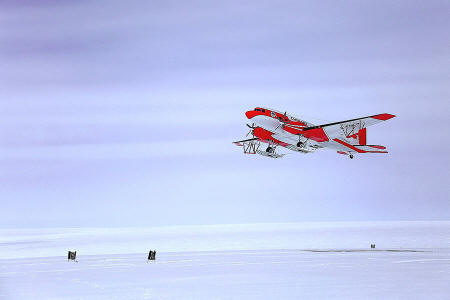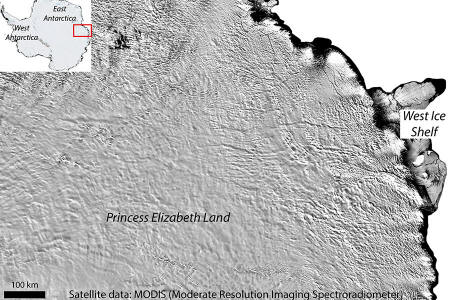|
22 April 2016 from NewScientist Website
Such subglacial lakes are of great interest because of the possibility that they could harbor unique life forms that may have existed in isolation, locked under ice for millions of years.
Although it doesn't quite beat Lake Vostok's 240-kilometre by 60-kilometre size, the new lake is much closer to a research station. This would make it easier to approach and study in detail, says Martin Siegert of Imperial College London, a member of the team that located the putative lake.
The team's claim comes from satellite imagery, in which they identified grooves on the ice surface similar to those present above known subglacial lakes and channels.
Ribbon-shaped lake
He says the lake is around 100 kilometers long by 10 kilometers wide and is ribbon-shaped.
The long channels and canyons that seem to extend from the lake appear to spread for more than 1000 kilometers towards the eastern coast of Antarctica on Princess Elizabeth Land, between Vestfold Hills and the West Ice Shelf.
MODIS/NASA
Two channels in particular seem to turn upwards into the ice and may convey water out of the West Ice Shelf into the ocean.
Siegert says that a team of collaborators from China and the US have recently flown over the region and gathered ice penetrating radar data that will likely confirm the existence of the features under the ice.
Pole of ignorance
If the existence of the lake and the channels is confirmed, as Siegert expects, he says it will be a major boost for Antarctic science and for research on subglacial lakes.
Just 100 kilometers from the nearest research base - a stone's throw on Antarctic scales - the new lake is far more accessible than others such as Lake Vostok, which is very remote.
That, says Siegert, should make it far easier to conduct vital investigations into the biology of the lake, to find out if it supports species unlike any others on the planet.
Read more: Frozen Kingdom - The Lost World under Antarctica's Ice.
|



